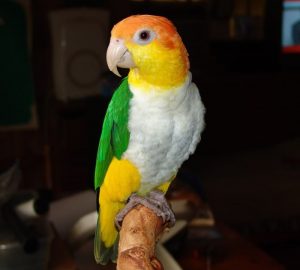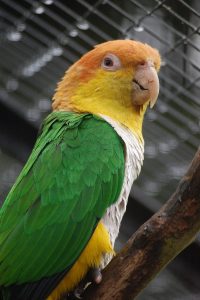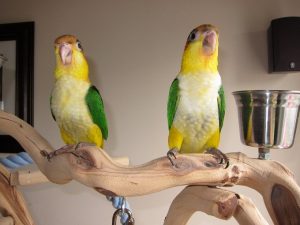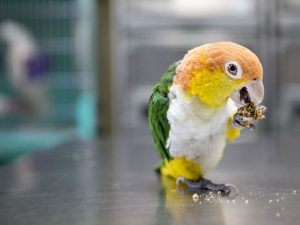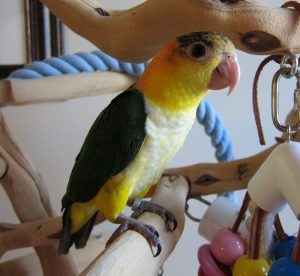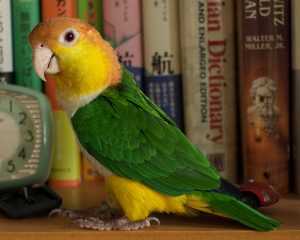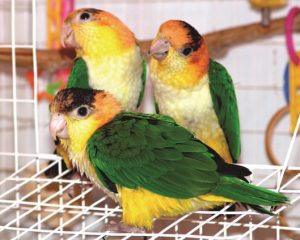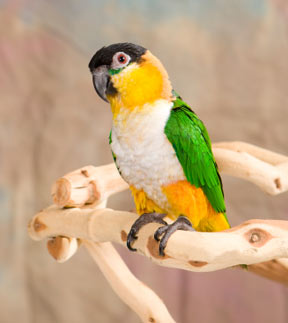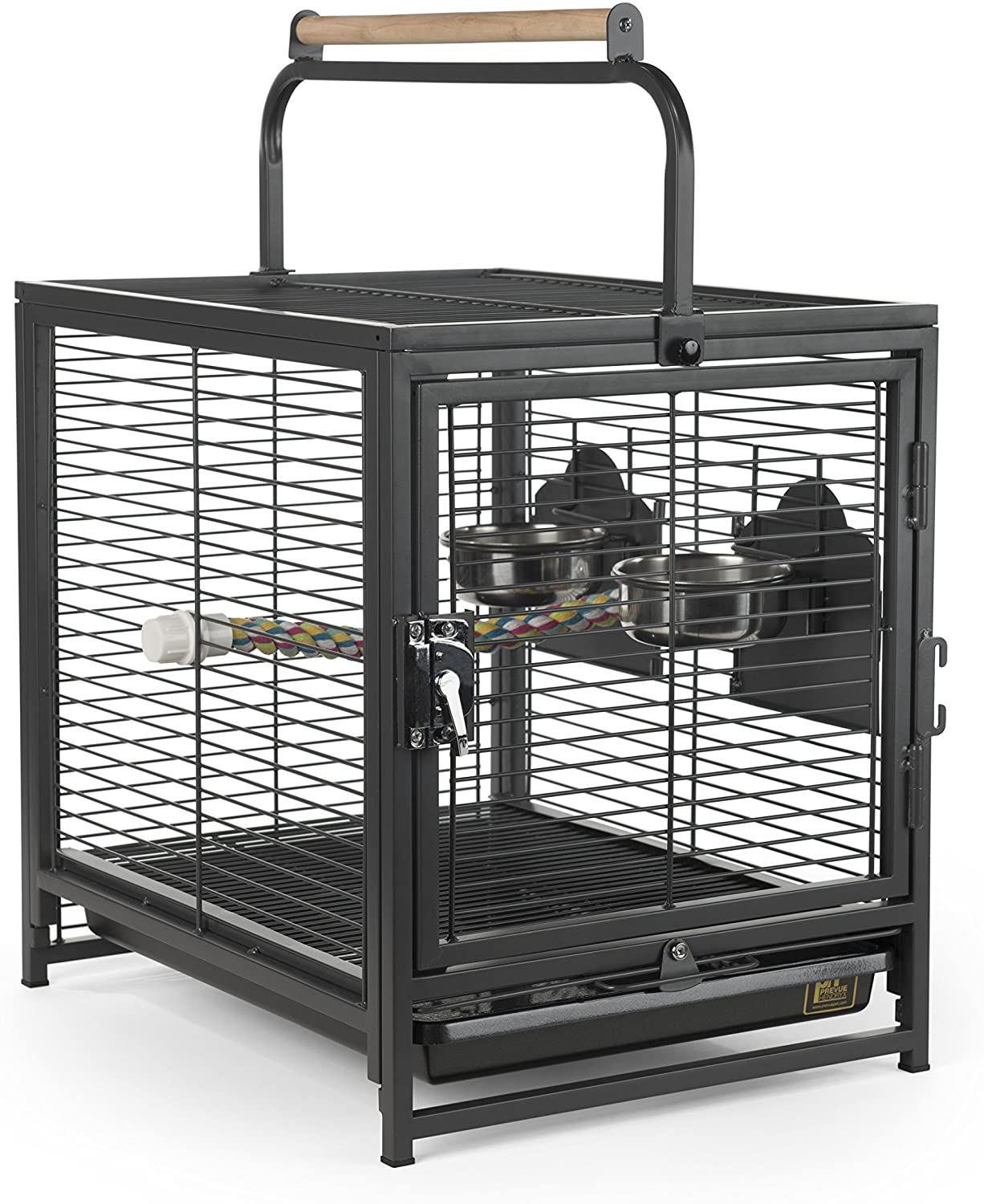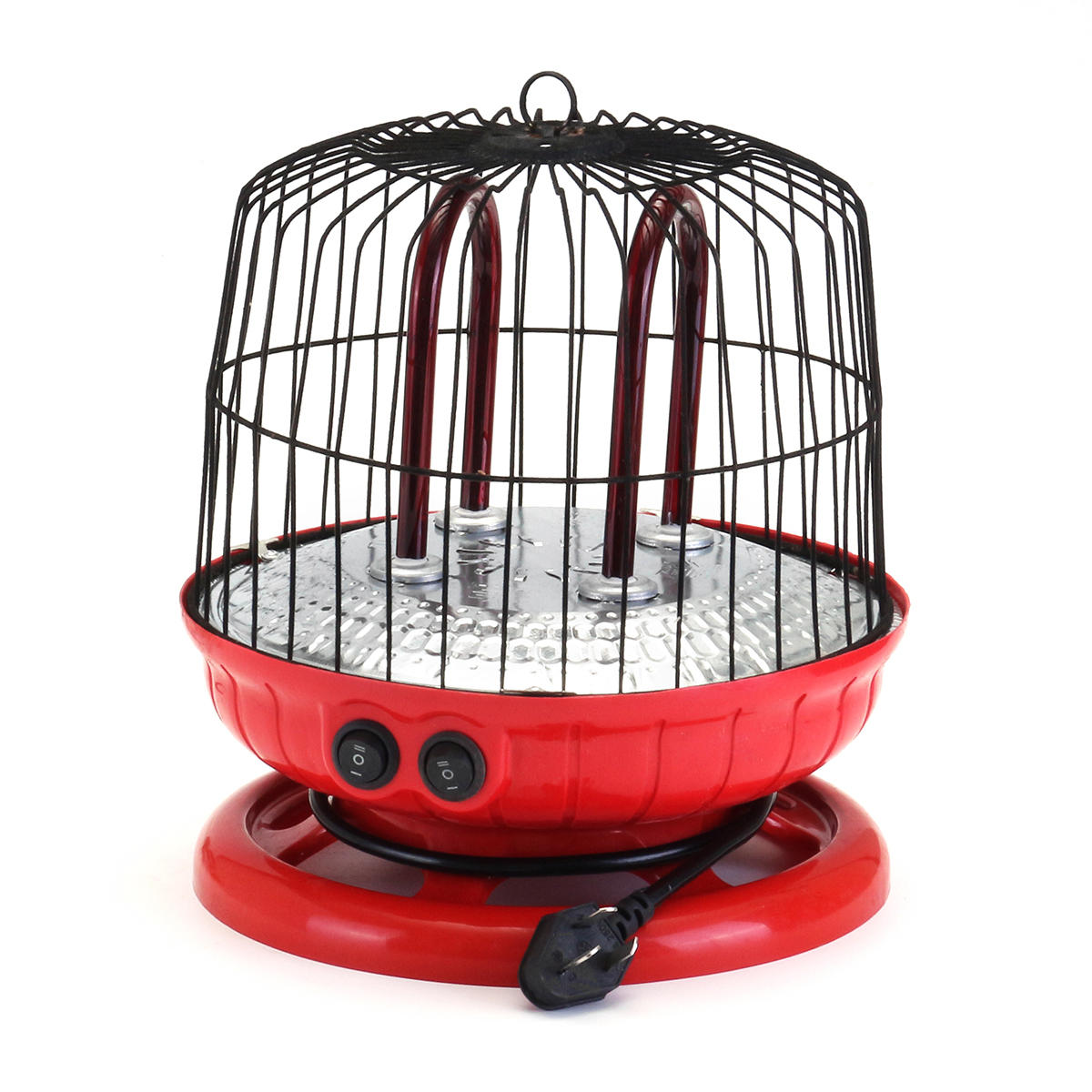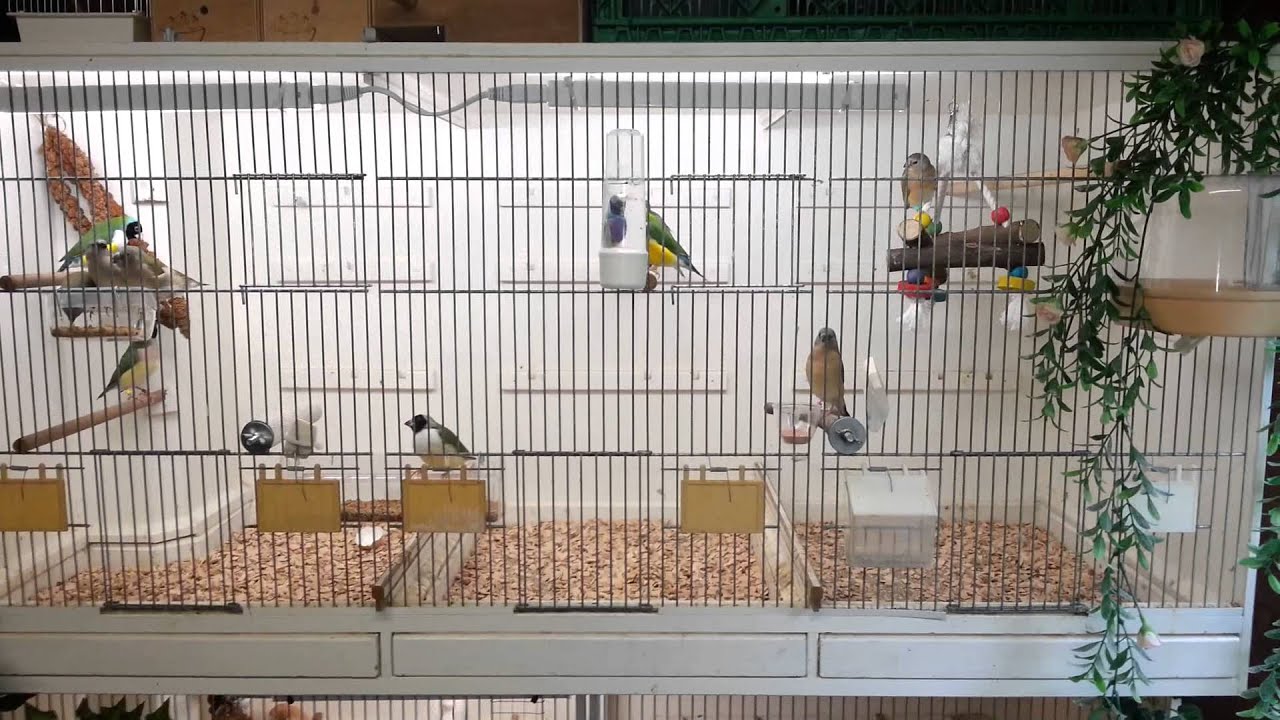These medium-sized caiques are South American parrots blessed with a colorful appearance. Their jocund personality makes them a clown bird. So, bird enthusiasts who take a special interest in such birds should know these parrots require your attention to feel loved and appreciated. In return, they will bestow you with pure love and happiness.
Quick Information |
|
| Other Names | Apricot-headed caique, white-breasted caique, and white-bellied caique, green–thighed parrot |
| Color | Peach head, yellow throat, white belly and green flight feathers |
| Size | 9-10 inches (23-25 cm) |
| Weight | 5.2-5.6 oz (150-160 gram) |
| Subspecies |
|
| Distribution | Brazil, Peru, and Bolivia and the Amazon Basin |
| Habitat | Seasonally flooded woodlands, tropical forests with nearby water bodies |
| Diet | Fruit, nuts, and seeds |
| Breeding age | 2 years |
| Clutch size | 3-4 eggs |
| Incubation period | 25-27 days |
| Fledging | 70-75 days |
| Lifespan | 30-40 years |
| IUCN Conservation Status | Endangered |
| Temperament as pets | Energetic and social |
| Maintenance requirement | Moderate |
| Noise level | Usually moderate but can emit high-pitched noise |
| Talking ability | Neil |
As pets
Housing
A stainless steel cage with a size of around 24X24X24 inches is good for the bird. Amongst other features, make sure it has horizontal bars (for climbing) and some perches (for grooming of nails). Keep it in a draft-free and well-ventilated place where natural light and air are moderate.
Temperature
They can bear cool temperatures with comfort and ease. So, ensure normal room temperatures for your pet bird.
Behavior and Temperament
They live up to their name “clown bird” with their agile, playful, and entertaining behavior. Playing with toys, climbing, whistling, hopping or bouncing are their favorite activities and they will never let you bore. They can’t talk like some of other parrots, but they can sing in different tunes. Their love for interacting with humans is phenomenal but when over-emotional they can even bite their favorite human.
Feeding
Seed mixed diet along with fresh fruits and vegetables should be given to the bird. It needs multivitamin as well, so include soluble or powder multivitamin.
Care
Talk to your pet so that it feels appreciated and finds a friend in you. It can learn many tricks and won’t hesitate to perform afterward. When you are not going to be around, arrange some playpens and toys to keep it busy. Your pet won’t mind spending some time with them at all.
Cleaning is an important chore you need to undertake on a regular basis. Wash the food and water bowl daily and change the drinking water twice every day. Disinfect the cage once in every week and during and after the process keep the bird in a separate cage. Get it back to the clean cage after it is well dried (preferably sun-dried).
This healthy bird can rarely be affected by polyomavirus that attacks its gastroenteritis system along with the kidney, liver, and heart.
Price
It costs within a range of $1,200-$1,900
Interesting facts
Edward Lear, the British poet had made some illustrations of parrots which he named as Bay-headed parrot, and that is actually a white-bellied caique.
Video: White-bellied Caique Singing
References


